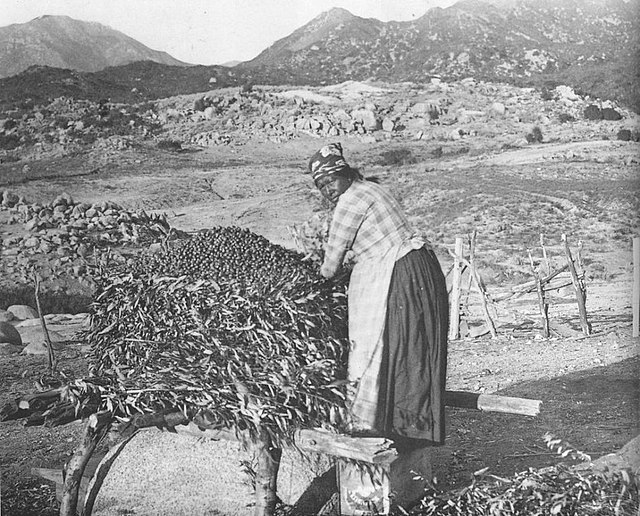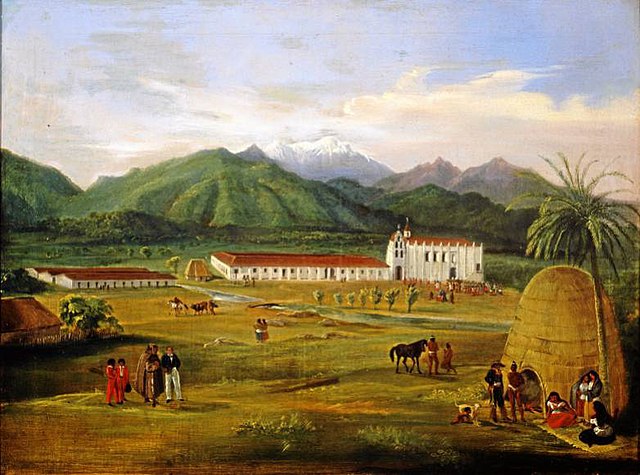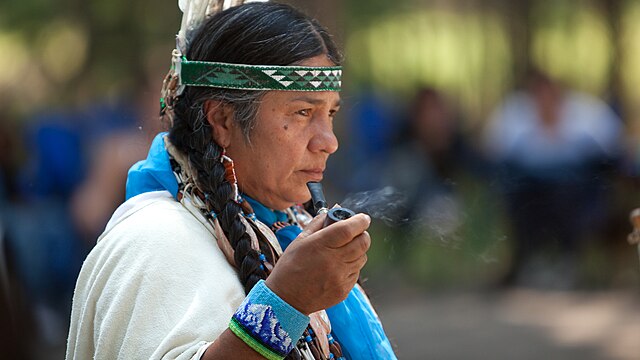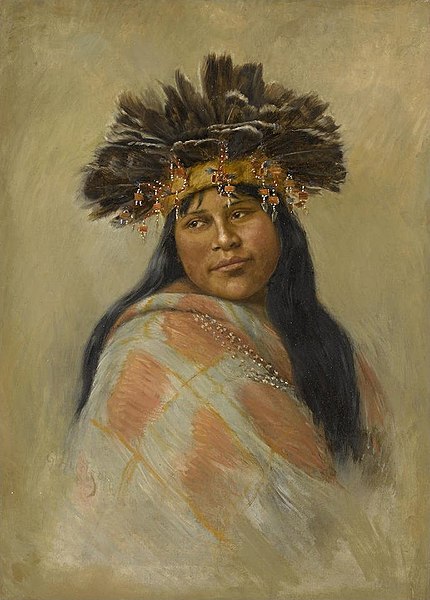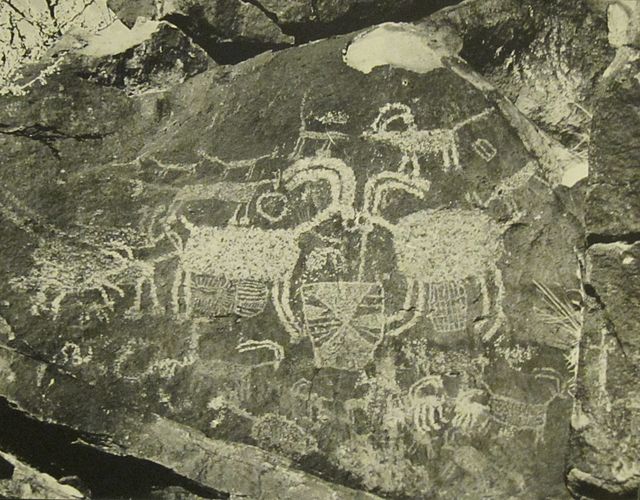The Tongva are an Indigenous people of California from the Los Angeles Basin and the Southern Channel Islands, an area covering approximately 4,000 square miles (10,000 km2). In the precolonial era, the people lived in as many as 100 villages and primarily identified by their village rather than by a pan-tribal name. During colonization, the Spanish referred to these people as Gabrieleño and Fernandeño, names derived from the Spanish missions built on their land: Mission San Gabriel Arcángel and Mission San Fernando Rey de España. Tongva is the most widely circulated endonym among the people, used by Narcisa Higuera in 1905 to refer to inhabitants in the vicinity of Mission San Gabriel. Some people who identify as direct lineal descendants of the people advocate the use of their ancestral name Kizh as an endonym.

Narcisa Higuera, photographed in 1905, was one of the last fluent Tongva speakers. An informant for ethnographer C. Hart Merriam, she was cited as the source of the widely used endonym Tongva.
A bench with the name Tongva on it.
Photograph of a Mission Indian (Gabrieleño) woman filling a granary with acorns, c.1898
Painting of Mission San Gabriel by Ferdinand Deppe (1832) showing a Gabrieleño kiiy thatched with tule.
Indigenous peoples of California
Indigenous peoples of California, commonly known as Indigenous Californians or Native Californians, are a diverse group of nations and peoples that are indigenous to the geographic area within the current boundaries of California before and after European colonization. There are currently 109 federally recognized tribes in the state and over forty self-identified tribes or tribal bands that have applied for federal recognition. California has the second-largest Native American population in the United States.
Winnemem Wintu chief Caleen Sisk in 2009
A Pomo dancer by Grace Hudson
The Coso Rock Art District in the Mojave desert contains about 100,000 petroglyphs.
A reconstruction of a traditional Yurok plank house.



